Kentucky Pest News Newsletter
HIGHLIGHTS IN THIS ISSUE
Number 1018__________April 26, 2004
TOBACCO
ALFALFA
SORGHUM
WHEAT
FRUIT
VEGETABLES
LAWN AND TURF
SHADE TREES AND ORNAMENTALS
PESTICIDE NEWS AND VIEWS
DIAGNOSTIC LAB HIGHLIGHTS
IPM TRAP COUNTS
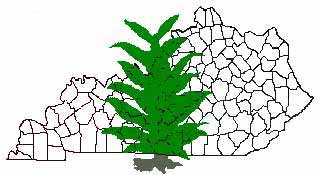
TOBACCO
2004 FUNGICIDE OPTIONS FOR FOLIAR DISEASE CONTROL IN KY TOBACCO FIELDS
By William Nesmith
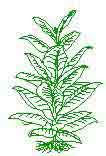 Although many new fungicides have been developed in
the past decade, Kentucky's tobacco growers will have
essentially the same foliar fungicide options for the 2004
season they had in 2003 as no new fungicides have been
labeled for field use on tobacco. The number of available
options is low, especially when compared with other high
value crops. Many chemical manufactures report that
labeling pesticides on tobacco is not economical, and the
crop does not qualify for the labeling assistance provided
under IR-4 Minor Use Pesticide Program. For social
reasons, others have no desire to label their material for
use on tobacco.
Although many new fungicides have been developed in
the past decade, Kentucky's tobacco growers will have
essentially the same foliar fungicide options for the 2004
season they had in 2003 as no new fungicides have been
labeled for field use on tobacco. The number of available
options is low, especially when compared with other high
value crops. Many chemical manufactures report that
labeling pesticides on tobacco is not economical, and the
crop does not qualify for the labeling assistance provided
under IR-4 Minor Use Pesticide Program. For social
reasons, others have no desire to label their material for
use on tobacco.
Foliar applied products can be important tools for
controlling tobacco diseases, especially blue mold and
bacterial leaf spots, in the tobacco field when used
correctly. However, we still do not have available effective
fungicides for some other important foliar diseases of
tobacco, especially target spot and frogeye. Some of the
blue mold materials will significantly reduce frogeye
disease but residue issues prevent sufficient post-topping
applications that are need to provide acceptable control of
frogeye.
Using the correct chemical, the proper rate, the
appropriate application method, and at the correct timing
are important to successful use of foliar-applied
fungicides. All those currently labeled on tobacco will
perform best when used prior to infection (in a preventive
role) rather than waiting until the disease is damaging the
crop, yet certain of these chemicals also have some rescue
potential. For most foliar applications, thorough coverage
is critical to success, especially under strong disease
pressure. Consequently, a good sprayer specially equipped
to deliver foliar protectant-type fungicides in a tall, dense,
row-crop is needed. In fact, the failure to adopt proper
spray equipment is the leading reason for lack of success
with foliar fungicides in tobacco.
The Kentucky Blue Mold Warning System should be a
excellent tool to assist growers in the need and timing of
foliar fungicides in tobacco. Although this website mainly
provides information on blue mold, advice is also
provided on other tobacco diseases. That website is located
at:
http://www.uky.edu/Agriculture/kpn/kyblue/kyblue.htm
The chemical options listed below have proved effective in
our experiments and demonstration trials and were
labeled for the uses mentioned as of April 20, 2004. There
may be others that are labeled for tobacco, but are not
included here, because they have not proven to be
effective under Kentucky's disease conditions, or in valid
efficacy tests conducted by pathologists in other major
tobacco production areas. Should any fungicide receive a
tobacco label during the growing season, special updates
will be provided in this newletter, plus it will be posted on
the above website.
Not included below are chemicals which are reportedly
being used and may even have proven efficacy, but that
are not labeled for field-tobacco-use in Kentucky,
including: Aliette, Bayleton, Benlate, Bleach, Captan, Flint,
Nova, Quadris, Rovral, and Tilt. In addition to unlabeled
uses being prohibited by state and federal pesticide laws,
tobacco marketing laws also directly prohibit the
marketing of tobacco treated with unlabeled chemicals.
Therefore, the use of these unlabeled materials should be
discouraged at all levels of the tobacco industry.
ACTIGARD 50WG has a federal label supporting use in
blue mold control on both burley and dark tobaccos as a
broadcast, foliar spray at 0.5 oz/acre, using 20-30 gallons
of water per acre. The pattern of use in burley and dark
tobaccos is very different from that labeled in flue cured
tobacco, so read the label carefully. The preharvest
interval is 21 days and the re-entry interval is 12 hours.
Application cannot begin in burley and dark tobacco until
after the plants reach a height of 18" (stalk length from bud
to the soil line) due to phytotoxicity problems. A second
application can be made 10 days later. Our studies have
demonstrated that Actigard is a valuable product in
improving the plants resistance to blue mold when applied
correctly, but has serious. limitations as a stand-alone
control for blue mold under prolonged or high disease
pressure.
The active ingredient (acibenzolar-S-methyl or
benzothiadiazole) is not directly toxic to the target
pathogens. Instead, it is a plant defense activator that
induces (triggers) a series of natural chemical reactions in
the treated plant that activate the plant's own resistance
mechanisms - called the SAR (systemic activated
resistance, also called systemic acquired resistance).
Consequently, disease control is normally not obtained
until four or five days after the application is made and
there may be other desirable and undesirable physiological
changes that occur under certain conditions in the treated
plant. The rate needs to be calculated carefully, as high
rates can be very phytotoxic and lower rates greatly reduce
efficacy. Yellowing of the foliage occurs during the time
defense chemicals are present, but this yellowing and the
control dissipate with time. It is important to control blue
mold prior to the plants reaching the stage that Actigard
can be used, as well as, in late-maturing varieties, by using
additional fungicides when blue mold favorable periods
exist. Follow directions carefully, in order to achieve the
desired disease control without causing crop damage.
Application rate and timing are critical to achieving
control while minimizing the phytotoxicity. The label
clearly states these "do nots" and I urge growers to follow
label warnings:
- Do not apply it to stressed plants.
- Do not apply it to seedlings, transplants, or small plants
- wait until plants are 18" tall.
- Do not apply it with foliar fertilizers or crop oils.
- Do not overlap spray coverage during application.
- Do not exceed the rate per each application, or the total
rate for the season.
ACROBAT MZ is labeled under a state label (24c) in
Kentucky that expires Decemeber 31, 2004. This state label
was renewed because the national label for Acrobat 50 WP
was not made available in the Kentucky market. The state
label can be found at
http://www.cdms.net/ldat/ld751003.pdf. Acrobat MZ
contains two fungicidal chemicals - the systemic
dimethomorph and the protectant mancozeb. Acrobat MZ
is labeled only as a foliar spray to be applied at 2.5 lbs/100
gallons/acre (volume adjusted for stage of growth). It is
highly effective when applied well and at close intervals,
even under aggressive disease pressure, but of limited
value when applied poorly or the intervals are not
maintained. Application can be made on a 5-7 day spray
schedule, once advisories have been issued, but
applications should be discontinued when and if the threat
of blue mold subsides. Sprays should be applied in a
preventive manner by ground-operated, high-pressure
sprayers equipped with hollow-coned nozzles on drops, or
with mist blowers or other air-blast equipment. Up to 8
applications can be made per crop, but the limit is 10.0
lbs/field/season, and with no more than 2.5 lbs/acre per
application. The preharvest- interval is 30 days between
last application and harvest. When being used in a weekly
spray schedule, this fungicide will also provide some
control of frogeye leaf spot, brown spot and ragged leaf
spot, but it is not specifically labeled for these. However,
the greatest pressure for these diseases is after topping, so
in reality, Acrobat MZ protection against these late season
leaf spots depends on when they develop in the crop. Also,
it has not proven effective in the control of target spot in
the field.
DITHANE DF RAINSHIELD is labeled under a state label,
24-c for use in the field, that expires December 31, 2004. A
copy of that label can be found at
http://www.cdms.net/ldat/ld4EA004.pdf. This special
state label for the field was needed mainly to have a
mixing partner for use with other foliar fungicides.
Dithane DF applications need to be made as with Acrobat
MZ but the rate is 1.5-2.0 lbs/100 gallons of water in
weekly foliar sprays for blue mold prevention. To be
effective, the fungicide mixture must be applied to achieve
complete coverage of the plant's foliage. Sprays should be
discontinued when the threat of blue mold no longer
exists. This spray program will also assist in early season
control of frogeye, brown spot and ragged leaf spot, but
not target spot. The preharvest interval between last
application and harvest is 30 days.
STREPTOMYCIN 17-21% [sold as Agri-Mycin 17, Agri-
Strep 21, and others] @ 0.5 to 1.0 lbs/ 100 gallons of water
is labeled for control of angular leaf spot and wildfire
under a national label. Rarely is this material needed in the
field, but if serious levels of angular leaf spot persist, then
control can be achieved in most cases with streptomycin, if
it is applied with a good sprayer. It has some systemic
activity, but good coverage of at least one side of the leaf is
important. If the disease is active at the time of the
application, make the first spray at 1.0 lbs/ 100 gallons
(200 ppm) then shift to lower rates until control has been
achieved. These sprays may be repeated at 5 to 7 day
intervals. For best results, make these applications late in
the day or at night. Streptomycin is also labeled for control
of blue mold, but we have had limited success in the lab
and field against current isolates of blue mold using
Streptomycin. Some isolates are streptomycin-sensitive,
however. Because bacterial diseases normally develop
under very wet conditions in rapidly growing tobacco,
having soil conditions to support spray equipment is often
the limiting factor unless sod drive- strips are present.
For the latest blue mold status and other tobacco disease information, check the KY Blue Mold Warning System online.
 http://www.uky.edu/Agriculture/kpn/kyblue/kyblue.htm
http://www.uky.edu/Agriculture/kpn/kyblue/kyblue.htm

For more information about tobacco pests, visit
"Insect Management Recommendations".
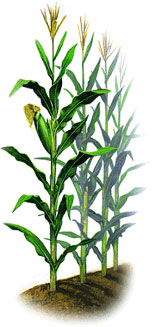
CORN
xxxxxxxxxx
By xxxxx
For information about corn pests, visit
"Insect Management Recommendations".

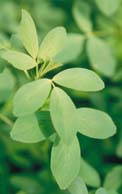
ALFALFA
ALFALFA WEEVIL CONTROL
By Lee Townsend
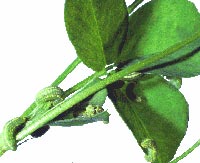 As of 4/26/04, alfalfa weevil degree-day totals range from
528 at Princeton to in northern Kentucky. Consequently,
weevil development ranges from nearly complete to just
hitting maximum feeding. Check fields closely for tip
feeding and the presence of the small light green weevil
larvae in plant tips. Early harvest or application of an
insecticide should be considered if 25% or more of the tips
are being eaten and there are 2 or more live larvae per
stem.
As of 4/26/04, alfalfa weevil degree-day totals range from
528 at Princeton to in northern Kentucky. Consequently,
weevil development ranges from nearly complete to just
hitting maximum feeding. Check fields closely for tip
feeding and the presence of the small light green weevil
larvae in plant tips. Early harvest or application of an
insecticide should be considered if 25% or more of the tips
are being eaten and there are 2 or more live larvae per
stem.
Early harvest can be an excellent option if alfalfa is in the
30% bud stage or greater. If this technique is used, then the
field should be examined for damage to re-growth by
lingering larvae or adults.
Insecticide applications usually fit best when weevil
numbers are high and harvest is several days away. These
situations call for a quick knock down without need for
long residual protection. Many insecticides have a range of
rates and harvest intervals that allow selection of an
optimum combination. Also, pyrethroid insecticides
(permethrin, cyfluthrin, z-cypermethrin, and l-cyhalothrin)
generally perform better than organophosphate
insecticides when temperatures are cooler than normal.
See Insect Recommendations
for more alfalfa pest recommendations.

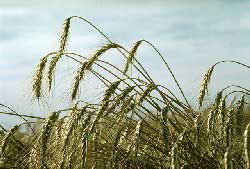
WHEAT
FUSARIUM HEAD BLIGHT RISK
By Don Hershman

On April 16, 2004 EPA granted Kentucky's section 18
request to allow the use of Folicur 3.6F on wheat to
suppress Fusarium Head Blight (FHB) and Deoxynivalenol
(DON) accumulation in harvested grain. Folicur use was
approved for the period April 20 to May 20, 2004. In any
given field, applications may be made over an
approximately 7-day period beginning at full head
emergence (Feeke's stage 10.5) through and including
early bloom (Feekes's stage 10.51).
I gave many specific details on the proper use of Folicur in
last week's issue of Kentucky Pest News
(http://www.uky.edu/Agriculture/kpn/kpn_04/current.htm ). Presently, we are watching and waiting. Some
wheat in southern Kentucky is now in bloom. The rest of
the wheat in the state will follow over the next 15 days or
so. I have been following the Head Blight Prediction
Center's (http://www.wheatscab.psu.edu/) FHB forecast
for different parts of Kentucky since April 14. Overall, we
have had periods of time in various parts of the state that
would have been favorable for FHB if wheat had been in
flower. I suspect that those conditions have also been
favorable for spore production by the causal fungus,
Fusarium graminearum. Thus, we appear to be set up for a
serious epidemic, state-wide, if temperature and moisture
conditions are above average over the next 10 to 15 days.
In almost every year some fields are severely damaged by
FHB. I would encourage you to monitor the above web site
daily during this period to determine the FHB risk for your
area. If the risk is moderate to high, you may consider
spraying with Folicur as a disease suppression tool. The
use of Folicur represents your last line of defense against
FHB and DON until crop harvest.
See "Insect Management Recommendations" for more wheat pest information.


SORGHUM
EARLY-SEASON WEED MANAGEMENT STRATEGIES IN GRAIN SORGHUM
By James R. Martin
Achieving good weed control in grain sorghum is a
challenge, and the outcome is often dependant on
decisions made early in the season.
Avoid Problem Fields
Avoid weedy fields, particularly those with johnsongrass,
shattercane, or perennial broadleaf weeds. Troublesome
weeds are especially difficult to control in grain sorghum;
therefore, work on the problem fields while in rotation
with soybeans or corn before going to grain sorghum.
Preplant Burndown Control
Herbicides commonly used for burndown weed control in
grain sorghum include Gramoxone Max or products
containing glyphosate. Banvel and Clarity are examples
of dicamba products that must be applied at least 15 days
prior to planting grain sorghum for burndown control of
broadleaf weeds, especially clovers or certain perennials.
Preemergence Broadleaf Weed Control
Atrazine is commonly used in preemergence applications
for controlling a broad spectrum of annual broadleaf
weeds in grain sorghum. The rate of atrazine is dependant
on a number of factors and should not exceed 2 lb ai/A.
Although crop injury can occur from atrazine, it is rarely a
problem in Kentucky. Situations that may enhance the
risk of injury due to atrazine include high rates, high soil
pH, sandy soil, or shallow planting. Follow label
restrictions concerning setbacks and atrazine rates to help
protect ground and surface water.
Preemergence Grass Control
Products approved for preemergence annual grass control
in grain sorghum are included in the following list with
their active ingredients:
| Single Ingredient Products |
Premixes |
|
Cinch (S-metolachlor)
Dual II Magnum (S-metolachlor)
Micro-Tech or Intrro (alachlor)
Outlook (dimethanamid-P)
|
Bullet (alachlor + atrazine)
Bicep II Magnum (S-metolachlor + atrazine)
Bullet (alachlor + atrazine)
Cinch ATZ (S-metolachlor + atrazine)
Guardsman Max (dimethanamid-P + atrazine)
|
In order to use these herbicides in grain sorghum, the crop
seed must be coated with a protectant or safener by the
seed company. Concep III (fluxofenim) is an example of a
safener commonly used. Sever crop injury will likely
occur if these herbicides are applied to fields where grain
sorghum seeds were not properly treated with the
protectant. The protectant enhances the sorghum's ability
to metabolize the herbicide during seed germination and
seedling emergence.
Using these herbicides at reduced rates is not a good
practice for controlling annual grasses, particularly where
fields are heavily infested or have fall panicum. There are
no postemergence grass herbicides that can be used as a
"back up" where preemergence herbicides fail; therefore,
it is important to use the rate recommended for your
situation.
Prowl or Prowl H2O (pendimethalin) in combination with
atrazine is approved as an early postemergence treatment
only after grain sorghum has reached the 2 - leaf stage and
before weeds exceed 1 inch in height. Do not apply Prowl
or Prowl H2O preplant incorporated or preemergence in
grain sorghum as severe crop injury can occur. In order to
minimize the risk of crop injury, the seedbed should be
firm and free of clods and there should be adequate tillage
to provide good seed coverage. Grain sorghum seed
should be planted at least 1½ inches deep. Weed control
may be less than optimum if rainfall does not occur within
7 days after application.

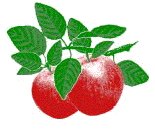
FRUIT
STRAWBERRY GRAY MOLD MANAGEMENT
By John Hartman
 Gray mold, caused by the fungus Botrytis cinerea is a
serious disease of strawberry. During wet growing
seasons, gray mold can decay a high proportion of fruit in
the strawberry bed, causing direct yield losses.
Management of gray mold requires good cultural practices
and timely fungicide applications.
Gray mold, caused by the fungus Botrytis cinerea is a
serious disease of strawberry. During wet growing
seasons, gray mold can decay a high proportion of fruit in
the strawberry bed, causing direct yield losses.
Management of gray mold requires good cultural practices
and timely fungicide applications.
Good cultural practices can reduce disease pressure. If
disease pressure is decreased, then the need for fungicide
decreases and the effectiveness of the fungicides that are
used increases. Some of the non-fungicidal alternatives for
gray mold management, include the following:
- Plant new beds periodically in new sites well away from
old strawberry beds. As the years pass strawberry beds
accumulate more and more dead leaves and other
organic debris. Accumulated dead leaves and other
debris are often infected with the Botrytis fungus. Thus,
in each subsequent spring, inoculum levels are higher
and disease pressure is increased and fungicide choices
and timing become more critical.
- Pick up and destroy old leaves in the bed to reduce
buildup of inoculum. This can work well for backyard
plantings, but is impractical for commercial growers.
- Reduce the over-all density of the strawberry beds. The
environment in the strawberry row affects disease
pressure. Botrytis needs damp conditions, poor air
circulation, poor sunlight penetration, and wet plants to
thrive. The thicker and heavier the foliar growth, the
longer tissue in the canopy, particularly blossoms and
fruit, stay wet.
- Use narrow rows and grow strawberries away from
nearby shading vegetation to reduce disease pressure.
- Fertilize strawberry beds at renovation time and during
flower bud initiation, but not in the springtime, because
it encourages lush gray mold-susceptible growth.
- Reduce disease pressure by using cultivars that are a
little sess susceptible to gray mold. Strong resistance to
gray mold doesn't exist in strawberries, but some
cultivars such as Earliglow, are somewhat less
susceptible to gray mold than average.
After taking measures to reduce disease pressure,
fungicides should be considered. Benlate (benomyl) and
Topsin-M (thiophanate methyl), can be very effective
against Botrytis, as long as the Botrytis fungus isn't
resistant to them. Elevate (fenhexamide) and Switch
(cyprodinil + fludioxonil) are also highly effective against
gray mold. Protectant fungicides such as captan and
thiram and strobilurin fungicides such as Cabrio
(pyraclostrobin), Pristine (pyraclostrobin + boscalid), and
Quadris (azoxystrobin) are moderately effective and where
good cultural practices have been used will manage gray
mold quite well.
Gray mold infections usually occur during bloom, so
sprays need to be applied now, while strawberries are in
flower. Two or three fungicide applications at bloom time
(early bloom, mid-bloom, late bloom) are more effective in
stopping gray mold than fungicide applications made after
fruit begins to form and ripen. Commercial growers
should consult U.K. Cooperative Extension Publication ID-
94, Midwest Commercial Small Fruit and Grape Spray
Guide 2004 for disease management details.

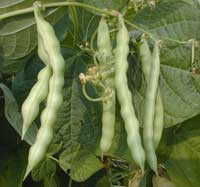
VEGETABLES
MANAGING EARLY SEASON VEGETABLE INSECT PESTS
By Ric Bessin
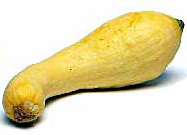 Early in the season it is important to get the seedlings and
vegetable transplants off to a good start. Cool weather
after transplanting or seedling emergence can cause young
plants to remain vulnerable for longer periods of time.
Scouting, use of economic thresholds, and rescue
treatments are the primary strategies for managing most of
these pests in the early season. There are a few early
season insects that need to be managed to ensure healthy
stands.
Early in the season it is important to get the seedlings and
vegetable transplants off to a good start. Cool weather
after transplanting or seedling emergence can cause young
plants to remain vulnerable for longer periods of time.
Scouting, use of economic thresholds, and rescue
treatments are the primary strategies for managing most of
these pests in the early season. There are a few early
season insects that need to be managed to ensure healthy
stands.
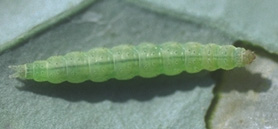 Cole crops (Cabbage, Broccoli, Cauliflower)
Cole crops (Cabbage, Broccoli, Cauliflower)
Striped flea beetles, imported cabbageworm and
diamondback moth larvae are the pests that attack the
spring crop. With flea beetles on seedling plants, less than
4 to 5 true leaves, use a threshold of an average of two
beetles per plant when deciding whether or not to spray. A
threshold of 15 percent infested plants can be used with
worms until either head-fill or crown formation, then the
threshold drops to 5 percent infested plants. While the
type of mixture of worms it is not important when
deciding if to spray, the types of worms will determine
which insecticides are used.
Sweet Corn
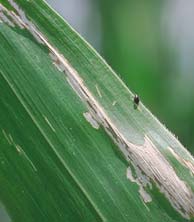 Corn flea beetles and cutworms are the two primary pests
that will attack seedling corn. Use 3 percent cut plants with
cutworms actively feeding as the guideline for treating
cutworms. Flea beetles can transmit the bacterium that
causes Stewart's Wilt, so wilt resistant cultivars may be
needed in years following mild winters. If corn flea beetle
is common, use a 50 percent of the plants with leaf scars
and some leaves turning white as the threshold for spray
decisions.
Corn flea beetles and cutworms are the two primary pests
that will attack seedling corn. Use 3 percent cut plants with
cutworms actively feeding as the guideline for treating
cutworms. Flea beetles can transmit the bacterium that
causes Stewart's Wilt, so wilt resistant cultivars may be
needed in years following mild winters. If corn flea beetle
is common, use a 50 percent of the plants with leaf scars
and some leaves turning white as the threshold for spray
decisions.
Tomatoes and Peppers
 Tobacco and potato flea beetles will attack both tomato
and pepper plants. Usually, the plants will quickly
outgrow moderate damage. Occasionally, serious damage
can occur to plants less than six inches. Use 4 or more
beetles per plant and plants less than 6 inches as the
guideline for treatment. Colorado potato beetle can also do
serious damage to tomato plants less than 8 inches. Use 10
beetles per 20 plants as the guideline for treatment when
the plants are less than 8 inches.
Tobacco and potato flea beetles will attack both tomato
and pepper plants. Usually, the plants will quickly
outgrow moderate damage. Occasionally, serious damage
can occur to plants less than six inches. Use 4 or more
beetles per plant and plants less than 6 inches as the
guideline for treatment. Colorado potato beetle can also do
serious damage to tomato plants less than 8 inches. Use 10
beetles per 20 plants as the guideline for treatment when
the plants are less than 8 inches.
Eggplant and Potato
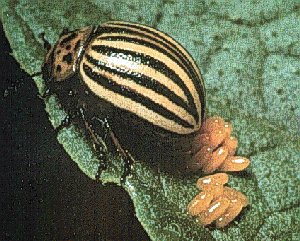 As with tomato, flea beetles and Colorado potato beetle
are serious early season pests of potato and eggplant. Use
the same threshold for tomatoes above. Resistance to
insecticides continues to be a serious problem for Colorado
potato beetle. Because of this, producers should not use
insecticides with the same mode of action for consecutive
generations of this insect. Often local populations of this
insect may be resistant to one group of insecticides, and in
other areas they may be resistant to others. For this reason,
what works well in one county may not work at all in
another. ID-36 lists the insecticides for Colorado potato
beetle control and the chemical classes they belong to.
As with tomato, flea beetles and Colorado potato beetle
are serious early season pests of potato and eggplant. Use
the same threshold for tomatoes above. Resistance to
insecticides continues to be a serious problem for Colorado
potato beetle. Because of this, producers should not use
insecticides with the same mode of action for consecutive
generations of this insect. Often local populations of this
insect may be resistant to one group of insecticides, and in
other areas they may be resistant to others. For this reason,
what works well in one county may not work at all in
another. ID-36 lists the insecticides for Colorado potato
beetle control and the chemical classes they belong to.
Squashes, Cucumbers and Melons
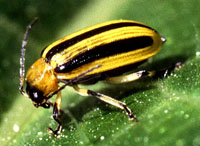 Striped and spotted cucumber beetles can attack cucurbit
crops anytime after seedling or transplanting. Cucumber
beetles also transmit the bacterium that causes bacterial
wilt. For this reason, cucurbit crops must be treated for
cucumber beetles as soon as they are planted. With
bacterial wilt susceptible crops, cucumber beetles need to
be effectively controlled through the start of flowering.
Many growers are using preventive systemic insecticides
for cucumber beetle and squash bug control in place of
foliar treatments early in the season. Keep in mind that
cucurbits are insect pollinated, so measures need to be
taken to control the beetles and avoid hurting pollinators
with foliar sprays. One method to avoid injuring
pollinators during bloom is to spray in the early evening
after pollinators have quit. Systemic treatments at
transplanting should have little effect on pollinators. The
flowers that are open will be closed the next day and new
blooms free of insecticide on the inner surface will be open
the following day. Squash bug is now known to
persistently transmit the agent that causes yellow vine.
Therefore, we need to preventively treat for squash bug as
we do for cucumber beetles.
Striped and spotted cucumber beetles can attack cucurbit
crops anytime after seedling or transplanting. Cucumber
beetles also transmit the bacterium that causes bacterial
wilt. For this reason, cucurbit crops must be treated for
cucumber beetles as soon as they are planted. With
bacterial wilt susceptible crops, cucumber beetles need to
be effectively controlled through the start of flowering.
Many growers are using preventive systemic insecticides
for cucumber beetle and squash bug control in place of
foliar treatments early in the season. Keep in mind that
cucurbits are insect pollinated, so measures need to be
taken to control the beetles and avoid hurting pollinators
with foliar sprays. One method to avoid injuring
pollinators during bloom is to spray in the early evening
after pollinators have quit. Systemic treatments at
transplanting should have little effect on pollinators. The
flowers that are open will be closed the next day and new
blooms free of insecticide on the inner surface will be open
the following day. Squash bug is now known to
persistently transmit the agent that causes yellow vine.
Therefore, we need to preventively treat for squash bug as
we do for cucumber beetles.

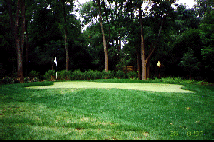
LAWN & TURF
TICKS ARE OUT
By Mike Potter
 Few outdoor encounters are as disconcerting as finding an
attached tick. Besides their repulsive appearance, ticks
inflict bites that cause itching and irritation. A small
percentage may also transmit diseases affecting people,
pets and farm animals. This column will help you answer
some of the more common questions about ticks and the
diseases they may transmit.
Few outdoor encounters are as disconcerting as finding an
attached tick. Besides their repulsive appearance, ticks
inflict bites that cause itching and irritation. A small
percentage may also transmit diseases affecting people,
pets and farm animals. This column will help you answer
some of the more common questions about ticks and the
diseases they may transmit.
Q: Where do ticks come from and how can I avoid them?
A: Ticks thrive in woods, uncut fields and brush. They
climb onto lower portions of vegetation and attach to a
suitable host passing by. To reduce tick encounters, follow
these precautions:
1. Don't walk through uncut fields, brush, and overgrown
areas, especially during April-July. Walk in the center of
mowed trails to avoid brushing up against vegetation.
When hiking or camping in tick-infested areas, wear light-
colored clothing and long pants tucked into boots or socks,
and consider using tick repellent.
2. Inspect family and pets after being in tick-prone areas.
Ticks often attach at the waist, armpit, neck and scalp, but
can attach virtually anywhere. Promptly remove any ticks,
using the method discussed below.
3. Keep grass and shrubs trimmed, and clear overgrown
vegetation from edges of your property. Ticks and their
wild hosts will not normally infest areas that are well
maintained. Treating the lawn with insecticides is of little
benefit since mowed areas are not normally infested. If
insecticides are used, treatment should be concentrated
mainly along borders and fences, and between overgrown
areas and the lawn. A good way to confirm if ticks are
present is to drag a white flannel cloth or sheet through
suspected areas. Ticks will attach and be visible against the
white background.
Insecticide sprays containing pyrethroids (e.g., Bayer
Advanced Home/GardenJ Multi-Insect Killer, Spectracide
TriazicideJ, Ortho Home Defense SystemJ) or carbaryl
(Sevin) are effective. Such products are sold at
hardware/lawn and garden shops. For better wetting and
coverage of vegetation, it's often best to purchase these
products as concentrates, so that they can be diluted and
applied with a hose end or pump up sprayer, etc. A single
application during late-April/May, or when ticks are
detected, is often all that's required.
4. Free-roaming pets are more likely to become infested
than if confined. Ticks on pets can be controlled or
prevented using sprays, spot-ons, and insecticide-
impregnated collars. See your veterinarian for appropriate
products.
Q: What's the best way to remove an attached tick?
A: Using a tweezers, grasp the tick as close to the skin as
possible and pull it straight out with gentle even pressure.
Petroleum jelly, hot matches and other "folk" methods of
removal should be avoided. Wash the bite area, apply
antiseptic and cover with a Band-Aid. Attached ticks
should be removed promptly to reduce the chance of
infection and disease transmission.
Q: Some clients use the terms "deer tick" or "turkey
mite" ... what are they referring to?
A: These terms are often used when referring to immature
(larval) lone star ticks, a common tick throughout much of
Kentucky. A person who walks through infested
vegetation may find hundreds of the tiny ticks (about the
size of the period at the end of this sentence) crawling on
them. Unattached larvae can be removed by bathing or
showering. However, once ticks are attached, removal is
difficult, and their bite can be very irritating. The lone star
tick is not considered to be a vector of Lyme disease,
although it can transmit Rocky Mountain spotted fever.
Q: Should I be concerned about getting Lyme disease or
Rocky Mountain spotted fever?
A: Each year about 20 to 40 cases of Lyme disease/Rocky
Mountain spotted fever are reported statewide. Some of
these victims may have been infected while traveling out-
of-state. In Kentucky, probably tens of thousands of
people are bitten by ticks each year; so the likelihood of
contracting a disease is very low. In most cases, a tick
must be attached for at least 18 to 24 hours for infection to
occur. One cannot become infected simply by having a tick
crawl over their skin or clothing. Concerned callers should
be informed of the early symptoms of tick-borne disease,
so they will know whether to seek medical attention.
Q: What are the symptoms of Lyme disease?
A: Lyme disease is difficult to diagnose clinically because
early symptoms mimic the flu, e.g., fatigue, headache,
fever, or swollen glands, pain or stiffness in the neck,
muscles or joints. The most definitive early symptom is a
gradually expanding, circular or oval-shaped red rash,
often (but not always) at the site of the bite. This rash only
develops in about 70% of infected individuals, however,
and may be overlooked. Persons, who experience any of
the above symptoms after being bitten by a tick, or after
spending time in an area where ticks are abundant, should
see a physician immediately. In the early stages, Lyme
disease can be successfully treated with antibiotics.
The mechanism by which Lyme disease is transmitted in
Kentucky is unclear. The primary tick vector, Ixodes
scapularis, has rarely been found here, although several of
the ticks were found recently while surveying deer herds
in southeastern (McCreary Co.) Kentucky. More probably
will be found in the future.
Q: What are the symptoms of Rocky Mountain spotted
fever?
A: Symptoms of RMSF are flu-like, accompanied by
headaches and a very high fever (104-106 degrees F), two
to 12 days after being bitten by a tick. The most
characteristic sign of RMSF is a rash that appears on about
the second to fifth day on wrists and ankles, later
spreading to other parts of the body. When promptly
diagnosed, RMSF can be successfully treated with
antibiotics. In the absence of treatment, victims may die.
Q: I don't have a rash but still feel "crummy"-are there
other tick-borne diseases I should be concerned about?
A: Tick bites can result in diseases other than Lyme disease
and Rocky Mountain spotted fever. Human ehrlichiosis is
one important, emerging disease complex, believed to be
transmitted by the species of ticks (e.g., lone star tick)
common in Kentucky. Symptoms of ehrlichiosis in
humans include fever, headache, chills, muscle aches,
nausea, and vomiting. There is usually no rash. Early
treatment with antibiotics is generally prescribed.
Localized itching and irritation are rather common at the
site of a tick bite. But when in doubt, it probably pays to
see a physician.
(For more information on this topic, see ENT-35, Ticks &
Disease in Kentucky).
Q: How important is Rocky Mountain spotted fever?
A: Rocky Mountain spotted fever (RMSF) has not received
the media attention of Lyme disease, but it is potentially
more serious. Each year there are about 10 to 30 cases
reported statewide. The primary vector of RMSF is the
American dog tick, although lone star ticks can also
transmit the disease pathogen.
Symptoms of RMSF are flu-like, accompanied by
headaches and a very high fever (104-106 degrees F), two
to 12 days after being bitten by a tick. The most
characteristic sign of RMSF is a rash that appears on about
the second to fifth day on wrists and ankles, later
spreading to other parts of the body. When promptly
diagnosed, RMSF can be successfully treated with
antibiotics. In the absence of treatment, victims may die.
In most cases, the tick must be attached for at least a day
for infection to occur.
(For further information, see ENT-35, Ticks & Disease In
Kentucky).

INCREASED RESISTANCE CONCERNS WITH PHOSPHITE (=PHOSPHONATE) FUNGICIDES
By Paul Vincelli
There are a number of turf fungicides the activity of which
is based on the phosphite (=phosphonate) ion (PO3-).
Chipco Signature fungicide (active ingredient fosetyl-Al) is
the most common, and has become a "keystone" product
for disease control programs on many golf courses across
the country. This is in part because of the general
enhancement in quality on stressed turfgrass that has been
reported in some studies, including selected tests at the
University of Kentucky. The product is also known to
provide control of Pythium cottony blight in many
circumstances, particularly when sequential applications
are made. Other phosphite fungicides marketed for turf
include Magellan, Resyst, Alude, Prodigy Signature, and
Vital.
These fungicides are unusual in that they control diseases
in two very different ways. They do have some direct
toxicity to the fungus, much like all conventional
fungicides which somehow poison the target fungus.
However, phosphite fungicides also enhance the plant's
natural defense mechanisms, which is not true for
conventional fungicides. Because these fungicides attack
fungi on "multiple fronts", the general belief among plant
pathologists has been that they are less subject to fungicide
resistance than most other systemic fungicides. And in
fact, field experience has been consistent with this. Cases
of failure of disease control by phosphite fungicides due to
fungicide resistance have been rare.
Recent Research
However, fungicide resistance is not an impossibility with
this group of fungicides. This point was made clear in a
recent paper on lettuce downy mildew (Plant Disease,
Volume 88, pages 502-508). (Although lettuce downy
mildew in California may seem to have no relevance to
Pythium cottony blight of turf in Kentucky, there are
significant biological similarities.)
In the paper, the authors reported about recent failures of
fosetyl-Al to control lettuce downy mildew in commercial
fields in the Salinas and Santa Maria Valleys. They
conducted a series of experiments that show evidence of
resistance to normal field rates of the fungicide. The
"resistant" isolates obtained showed varying degrees of
resistance, ranging from some that were still partially
sensitive to normal field rates of the fungicide, to other
isolates that were essentially insensitive at normal field
rates. Their data, as well as another research report I have
seen, suggest that isolates resistant to phosphite fungicides
may be ecologically "fit". This means that, once resistance
occurs, the fungal population possibly will remain
resistant even if fosetyl-Al and similar materials are not
used for a period of time.
In the study, the authors noted two factors that may have
been involved in the selection of resistance to phosphite
fungicides.
1. Repeated use of fosteyl-Al (or similar fungicides) over
the past decade.
2. Regular applications of fertilizers which provided
phosphorous in the form of phosphite rather than the
more common phosphate. This may have speeded
selection towards resistance by exposing the pathogen
population to frequent, low doses of phosphite.
Significance to Turf
This report, and a few others in the scientific literature,
indicate that field resistance to phosphite fungicides is a
definite possibility. Such resistance may take a period of
years to develop at any particular site. How many years?
There is no way to accurately predict this, because there
are so many complex and interacting factors that influence
this. However, I see this report as a reminder to remain
aware of the possibility when using these fungicides.
This report of resistance does complicate disease
management on golf courses somewhat. It is a common
practice during the summer on many courses to spray
putting greens every two weeks with Chipco Signature,
tank-mixed with one of a number of other fungicides
(usually iprodione or chlorothalonil). Such a program
generally provides very good control of a number of
important diseases, such as brown patch, dollar spot, and
Pythium. It also sometimes provides improved turf
quality unrelated to these diseases when stressful
conditions hit.
This research report serves as a yellow flag with respect to
these spray programs. It would be wise for golf course
superintendents to continue to find ways to rotate among
fungicide products, and to not rely exclusively during
summer on phosphite-based spray programs. Also, it may
be wise to avoid frequent use of both phosphite-based
fertilizers and phosphite-based fungicides on the same
sites.

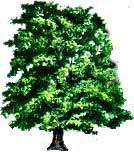
SHADE TREES AND ORNAMENTALS
CEDAR RUSTS ABUNDANT THIS YEAR
By John Hartman
With prolonged rains last week, cedar trees (mostly
Juniperus virginianae) were seen to be decorated with rust
fungi in many locations statewide. Cedar-apple rust
(Gymnosporangium juniperi-virginianae) was most visible
while displaying large galls decorated with masses of
bright orange gelatinous spore horns. Cedar-hawthorn
rust (Gymnosporangium globosum) with smaller galls and
orange spore horns could be found on many cedars. Less
conspicuous, but omni-present, cedar-quince rust
(Gymnosporangium clavipes) also decorated leaves and
swollen twigs of cedar trees with smaller orange spore
masses.
Expect symptoms of these cedar rust diseases to appear on
leaves, twigs and fruit of their alternate hosts, apple,
flowering crabapple, and hawthorn in the coming weeks.


PESTICIDE NEWS AND VIEWS
SPARTAN LABELED FOR USE ON SUNFLOWERS
By J. D. Green
Field size production of sunflowers is sometimes grown in
Kentucky and broadleaf weed control options have been
limited. The EPA has recently granted a registration for
use of SPARTAN 4F herbicide on sunflowers. As a soil-
applied herbicide Spartan can help provide control of
broadleaf weeds such as Eastern black nightshade,
common lambsquarters, annual morningglories, and
smooth pigweed. Spartan may be tank mixed with other
soil-applied herbicides labeled for use on sunflowers.
Spartan can be applied to the soil surface in the spring as
an early preplant application prior to planting up to 3 days
after planting (before sunflower seedlings have broken the
soil surface). It may also be applied as a preplant
incorporated treatment if shallowly incorporated in the
soil no deeper than 2 inches. Use rates may vary from 4 to
6 fl.oz. per acre depending on soil texture, organic matter,
and soil pH. Some adverse crop response may occur on
course textured soils with low organic matter (less than
1.5%) and pH >7.0. Inadequate seed furrow closure or
shallow planting may result in undesirable crop response.
Consult other label requirements regarding future crop
rotations and other use precautions.

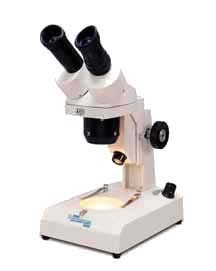
DIAGNOSTIC LAB HIGHLIGHTS
DIAGNOSTIC LAB - HIGHLIGHTS
By Julie Beale and Paul Bachi
Samples diagnosed recently included problems from soil
compaction and fertilizer burn on wheat; heat injury and
Pythium root rot on tobacco; iron toxicity on greenhouse
geranium; impatiens necrotic spot virus, low fertility, and
spider mite infestation on greenhouse impatiens; and
growth regulator injury on tomato transplants. On
landscape samples we have seen white pine decline
(Eastern white pine), pine needle rust (Loblolly pine) and
tip blight (Scots pine); Verticillium wilt on maple; and
Pythium root rot on
turfgrass.

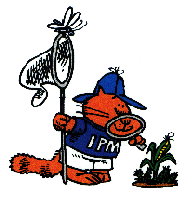
IPM TRAP COUNTS:
By Patty Lucas, University of Kentucky Research Center
UKREC-Princeton, KY, April 16 - 23, 2004
| Black Cutworm
| 1
|
| True Armyworm
| 36
|
| Corn Earworm
| 6
|
| European Corn Borer
| 0
|
|
For information on trap counts in southern Illinois visit the
Hines Report at -
http://www.ipm.uiuc.edu/pubs/hines_report/index.html.
The Hines Report is posted weekly by Ron Hines, Senior
Research Specialist, at the University of Illinois Dixon
Springs Agricultural Center
NOTE: Trade names are used to simplify the information presented in
this newsletter. No endorsement by the Cooperative Extension Service
is intended, nor is criticism implied of similar products that are not
named.
Lee Townsend
Extension Entomologist
BACK
TO KY PEST NEWS HOME
 Although many new fungicides have been developed in
the past decade, Kentucky's tobacco growers will have
essentially the same foliar fungicide options for the 2004
season they had in 2003 as no new fungicides have been
labeled for field use on tobacco. The number of available
options is low, especially when compared with other high
value crops. Many chemical manufactures report that
labeling pesticides on tobacco is not economical, and the
crop does not qualify for the labeling assistance provided
under IR-4 Minor Use Pesticide Program. For social
reasons, others have no desire to label their material for
use on tobacco.
Although many new fungicides have been developed in
the past decade, Kentucky's tobacco growers will have
essentially the same foliar fungicide options for the 2004
season they had in 2003 as no new fungicides have been
labeled for field use on tobacco. The number of available
options is low, especially when compared with other high
value crops. Many chemical manufactures report that
labeling pesticides on tobacco is not economical, and the
crop does not qualify for the labeling assistance provided
under IR-4 Minor Use Pesticide Program. For social
reasons, others have no desire to label their material for
use on tobacco.




 As of 4/26/04, alfalfa weevil degree-day totals range from
528 at Princeton to in northern Kentucky. Consequently,
weevil development ranges from nearly complete to just
hitting maximum feeding. Check fields closely for tip
feeding and the presence of the small light green weevil
larvae in plant tips. Early harvest or application of an
insecticide should be considered if 25% or more of the tips
are being eaten and there are 2 or more live larvae per
stem.
As of 4/26/04, alfalfa weevil degree-day totals range from
528 at Princeton to in northern Kentucky. Consequently,
weevil development ranges from nearly complete to just
hitting maximum feeding. Check fields closely for tip
feeding and the presence of the small light green weevil
larvae in plant tips. Early harvest or application of an
insecticide should be considered if 25% or more of the tips
are being eaten and there are 2 or more live larvae per
stem.




 Gray mold, caused by the fungus Botrytis cinerea is a
serious disease of strawberry. During wet growing
seasons, gray mold can decay a high proportion of fruit in
the strawberry bed, causing direct yield losses.
Management of gray mold requires good cultural practices
and timely fungicide applications.
Gray mold, caused by the fungus Botrytis cinerea is a
serious disease of strawberry. During wet growing
seasons, gray mold can decay a high proportion of fruit in
the strawberry bed, causing direct yield losses.
Management of gray mold requires good cultural practices
and timely fungicide applications.

 Early in the season it is important to get the seedlings and
vegetable transplants off to a good start. Cool weather
after transplanting or seedling emergence can cause young
plants to remain vulnerable for longer periods of time.
Scouting, use of economic thresholds, and rescue
treatments are the primary strategies for managing most of
these pests in the early season. There are a few early
season insects that need to be managed to ensure healthy
stands.
Early in the season it is important to get the seedlings and
vegetable transplants off to a good start. Cool weather
after transplanting or seedling emergence can cause young
plants to remain vulnerable for longer periods of time.
Scouting, use of economic thresholds, and rescue
treatments are the primary strategies for managing most of
these pests in the early season. There are a few early
season insects that need to be managed to ensure healthy
stands.
 Cole crops (Cabbage, Broccoli, Cauliflower)
Cole crops (Cabbage, Broccoli, Cauliflower) Corn flea beetles and cutworms are the two primary pests
that will attack seedling corn. Use 3 percent cut plants with
cutworms actively feeding as the guideline for treating
cutworms. Flea beetles can transmit the bacterium that
causes Stewart's Wilt, so wilt resistant cultivars may be
needed in years following mild winters. If corn flea beetle
is common, use a 50 percent of the plants with leaf scars
and some leaves turning white as the threshold for spray
decisions.
Corn flea beetles and cutworms are the two primary pests
that will attack seedling corn. Use 3 percent cut plants with
cutworms actively feeding as the guideline for treating
cutworms. Flea beetles can transmit the bacterium that
causes Stewart's Wilt, so wilt resistant cultivars may be
needed in years following mild winters. If corn flea beetle
is common, use a 50 percent of the plants with leaf scars
and some leaves turning white as the threshold for spray
decisions.
 As with tomato, flea beetles and Colorado potato beetle
are serious early season pests of potato and eggplant. Use
the same threshold for tomatoes above. Resistance to
insecticides continues to be a serious problem for Colorado
potato beetle. Because of this, producers should not use
insecticides with the same mode of action for consecutive
generations of this insect. Often local populations of this
insect may be resistant to one group of insecticides, and in
other areas they may be resistant to others. For this reason,
what works well in one county may not work at all in
another. ID-36 lists the insecticides for Colorado potato
beetle control and the chemical classes they belong to.
As with tomato, flea beetles and Colorado potato beetle
are serious early season pests of potato and eggplant. Use
the same threshold for tomatoes above. Resistance to
insecticides continues to be a serious problem for Colorado
potato beetle. Because of this, producers should not use
insecticides with the same mode of action for consecutive
generations of this insect. Often local populations of this
insect may be resistant to one group of insecticides, and in
other areas they may be resistant to others. For this reason,
what works well in one county may not work at all in
another. ID-36 lists the insecticides for Colorado potato
beetle control and the chemical classes they belong to.
 Striped and spotted cucumber beetles can attack cucurbit
crops anytime after seedling or transplanting. Cucumber
beetles also transmit the bacterium that causes bacterial
wilt. For this reason, cucurbit crops must be treated for
cucumber beetles as soon as they are planted. With
bacterial wilt susceptible crops, cucumber beetles need to
be effectively controlled through the start of flowering.
Many growers are using preventive systemic insecticides
for cucumber beetle and squash bug control in place of
foliar treatments early in the season. Keep in mind that
cucurbits are insect pollinated, so measures need to be
taken to control the beetles and avoid hurting pollinators
with foliar sprays. One method to avoid injuring
pollinators during bloom is to spray in the early evening
after pollinators have quit. Systemic treatments at
transplanting should have little effect on pollinators. The
flowers that are open will be closed the next day and new
blooms free of insecticide on the inner surface will be open
the following day. Squash bug is now known to
persistently transmit the agent that causes yellow vine.
Therefore, we need to preventively treat for squash bug as
we do for cucumber beetles.
Striped and spotted cucumber beetles can attack cucurbit
crops anytime after seedling or transplanting. Cucumber
beetles also transmit the bacterium that causes bacterial
wilt. For this reason, cucurbit crops must be treated for
cucumber beetles as soon as they are planted. With
bacterial wilt susceptible crops, cucumber beetles need to
be effectively controlled through the start of flowering.
Many growers are using preventive systemic insecticides
for cucumber beetle and squash bug control in place of
foliar treatments early in the season. Keep in mind that
cucurbits are insect pollinated, so measures need to be
taken to control the beetles and avoid hurting pollinators
with foliar sprays. One method to avoid injuring
pollinators during bloom is to spray in the early evening
after pollinators have quit. Systemic treatments at
transplanting should have little effect on pollinators. The
flowers that are open will be closed the next day and new
blooms free of insecticide on the inner surface will be open
the following day. Squash bug is now known to
persistently transmit the agent that causes yellow vine.
Therefore, we need to preventively treat for squash bug as
we do for cucumber beetles.

 Few outdoor encounters are as disconcerting as finding an
attached tick. Besides their repulsive appearance, ticks
inflict bites that cause itching and irritation. A small
percentage may also transmit diseases affecting people,
pets and farm animals. This column will help you answer
some of the more common questions about ticks and the
diseases they may transmit.
Few outdoor encounters are as disconcerting as finding an
attached tick. Besides their repulsive appearance, ticks
inflict bites that cause itching and irritation. A small
percentage may also transmit diseases affecting people,
pets and farm animals. This column will help you answer
some of the more common questions about ticks and the
diseases they may transmit.



